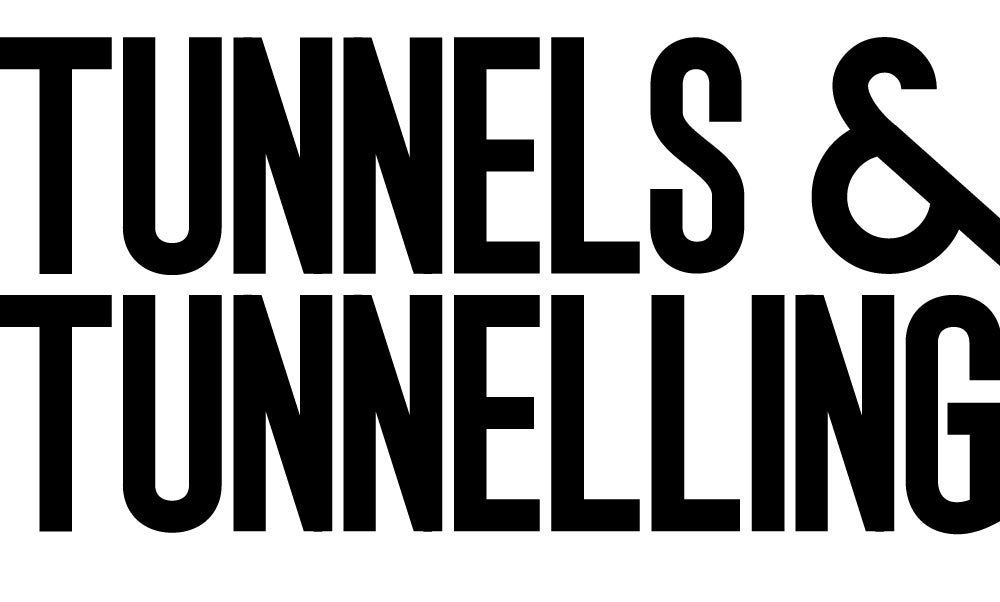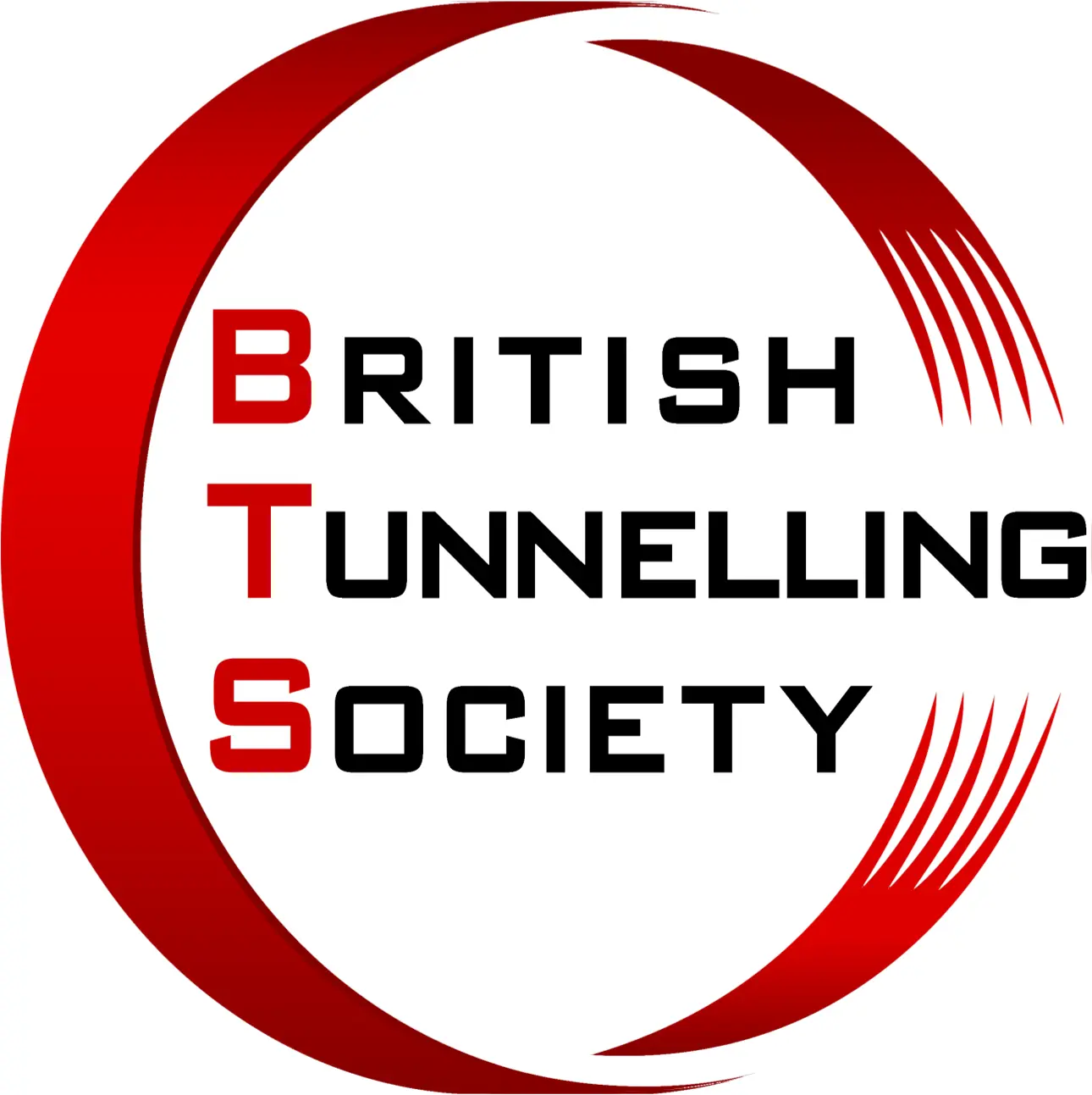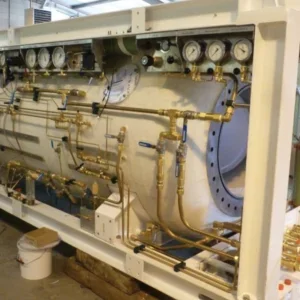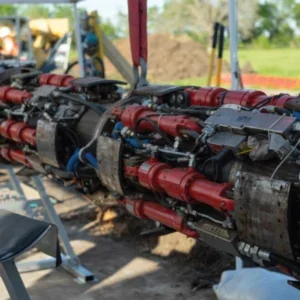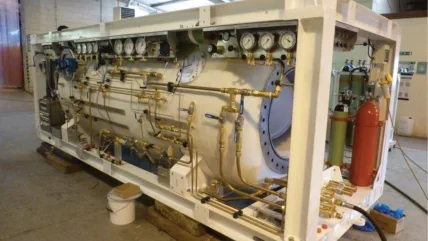
High pressure compressed air (HPCA) work using mixed gas and saturation exposure techniques is becoming slightly more of a reality. It was used extensively and to good effect on the Tuen Mun contract in Hong Kong and is a planned contingency measure on contracts in Singapore and in the UK, where it is likely to be required for the Lower Thames Crossing tunnels.
Guidance on HPCA work is given in ITA/BTS CAWG Report 10 ‘Guidelines for Good working Practice in High Pressure Compressed Air, published in 2024.
The guidance in Report 10 is both technical and complex and, therefore, ITA/BTS CAWG published a complementary, explanatory guide to the concepts and terminology used, entitled ‘Guide to ITA/BTS CAWG Report 10 for Clients and others not familiar with High Pressure Compressed Air Works’ (Report 20).
Report 20 also provides clients with guidance on various aspects of the procurement of HPCA work.
HPCA – physical principles
The physical principles behind HPCA work are the same as for low or intermediate pressure compressed air work: the application of compressed air to balance groundwater pressure (Lamont et al 2024). The major differences are in the negative physiological responses of the bodies of tunnel workers in exposure to air at high pressure. It is not the body’s response to the total pressure of the air which is the problem but the response to the partial pressure of the constituent gases (see box panel-1).
Consequently non-air mixed gas breathing mixtures are required for non-saturation and saturation high pressure exposures.
Saturation – a physiological state
Understanding saturation and hyperbaric mixed gas physiology is one key to understanding HPCA work. Another is recognising that, in HPCA work, immersion is in a gas and not in water as in diving. This results in a lack of buoyancy and also in a pressure profile for compressed air that can be assumed to be constant with depth; in water, pressure increases linearly with depth.
Breathing apparatus is only required in HPCA work where the cost of pressurisation with mixed gas makes this option prohibitive.
Saturation is the natural default condition of the body in which the partial pressures of the inert gases in the tissues equal the partial pressures of the inert gases being breathed. The partial pressure of oxygen in the tissues is always slightly lower than that inhaled due to human metabolism.
Once saturation has been established, and provided there is no further change in pressure or breathing mixture, there is no change in tissue gas no matter how long the exposure lasts. This is the key benefit of saturation exposure techniques. Saturation is a physiological state and is not restricted to diving, hence terms such as ‘saturation diving in tunnelling’ show a complete lack of awareness of what saturation really means. Remember – we all live in saturation in a ~20/80 oxygen/nitrogen mixture called ‘air’ at atmospheric pressure and very few of us are divers!
ITA/BTS CAWG REPORTS
Report 10 is divided into a number of sections, which are described in some detail below.
One important aspect of HPCA work, highlighted in the definition of such work, is that it is undertaken at pressures above national statutory limits and hence by definition is illegal without some form of exemption, approval or variance from the national regulator. Section 3 of the report provides guidance on the content of applications to regulators in terms of data supporting the application, trial runs, mathematical modelling, and physiological monitoring.
Over the past decade or so, HPCA has gone from being a radically new high-risk technique in tunnelling to a novel technique with some history of successful application. Report 10 now recommends that regulators become more restrained in their demands for modelling and trials but continue to require data on recent use.
The development of mixed gas and saturation exposure techniques in diving was largely driven by the need to explore and exploit oil and gas reserves in water depths of 50m – ~150m and beyond which is far beyond the air diving limits of ~ 50m. Until relatively recently there has been little demand in soft ground tunnelling to go beyond national limits of typically 3 bar(g) – 4 bar(g) (gauge pressure, measured in excess of atmospheric pressure) but as the underground space gets more crowded and the demand for undersea tunnels increases, deeper tunnels requiring higher pressures and the use of more sophisticated hyperbaric techniques are required.
Section 4 covers organisational aspects of HPCA work identifying the persons/roles additional to those set out in the BTS Guide (2021), which are required for HPCA work. Report 10 recommends that a person is appointed to manage all surface activity along with a second person to manage the deployment of the hyperbaric personnel from the habitat to the TBM and back to the habitat.
Additionally a person should be appointed to be responsible for all aspects of the mixed gas supply.
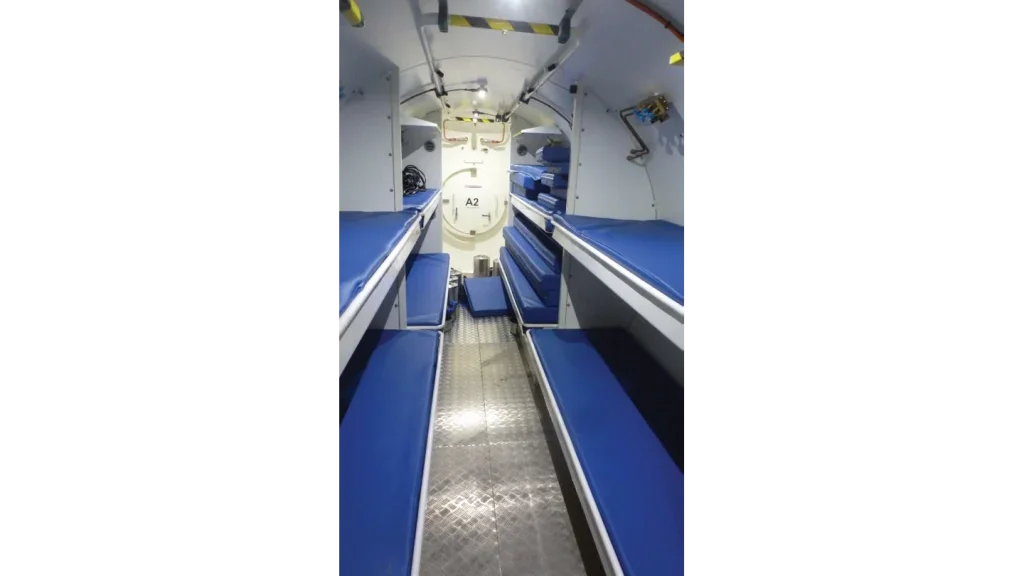
Further additional personnel are required to handle umbilicals and provide support for transfer under pressure (TUP) shuttle movements. The additional competencies required for mixed gas or saturation techniques are also set out.
Section 5 provides guidance on operational matters, including planning the work, geotechnical considerations, applications in smaller tunnels, and extending the guidance in Section 7 of the BTS Guide.
Section 6 of Report 10 deals with plant, equipment and gas supply. It includes guidance on umbilicals and masks as well as guidance on docking systems for TUP by shuttle. There are also recommendations for the safe movement of the shuttle in both shafts and tunnels. There is extensive guidance on gas supply covering procurement, minimum quantities, mixing, storage facilities, testing, and putting into supply. Compatibility of hoses, valves, etc, with the gases being used is covered along with requirements for oxygen cleanliness of pipework, etc, to mitigate fire/explosion risk. Helium reclaim, which can have commercial benefits, is also discussed. Extensive guidance on requirements for habitats, including their protective enclosures, essential services and facilities for ‘hotel services’ along with accommodation for life support staff is also set out.
Section 7 extends the guidance in the BTS Guide on medical and health matters to HPCA work and life in saturation.

Section 8 provides guidance on hyperbaric procedures – which is probably the most challenging aspect of HPCA work. It sets out extensive information on gas properties, the numerous exposure limits arising from these gas properties and on breathing mixture selection. Compression and decompression procedures are covered along with pressure and time limits on periods spent in the TUP shuttle and working on the TBM. It also sets out recommendations for working patterns and shift structuring along with time limits on exposure.
Section 9 deals with record keeping and is an extension of BTS Guide requirements.
Section 10 covers emergency procedures and fire. One side effect of using low oxygen breathing mixtures is the lower flammability of materials as the oxygen concentration in the atmosphere is reduced.
Flammability reduces with reducing oxygen concentration till there is total inflammability at around 6% oxygen by volume. This is typically achieved in storage at pressures over 6 bar(g).
However, on the negative side, for fire safety reasons the oxygen concentration should be kept below ~23% by volume which limits the oxygen concentration in the habitat atmosphere during the later stages of decompression.
Emergency procedures should also address accelerated decompression – removing a critically injured/ill casualty for urgent hospital care, from saturation as rapidly as possible without triggering a life threatening DCI (decompression sickness) event.
HPCA work will never become a mainstream tunnelling technique, but it will enable deeper more complex tunnels to be built.
HPCA – BREATHING MIXTURE GASES
The ‘big 3’ breathing mixture gases are oxygen, nitrogen and helium.
Oxygen is a relatively dense, non-narcotic, metabolically active gas which causes a potentially fatal response if breathed at too low or too high partial pressures.
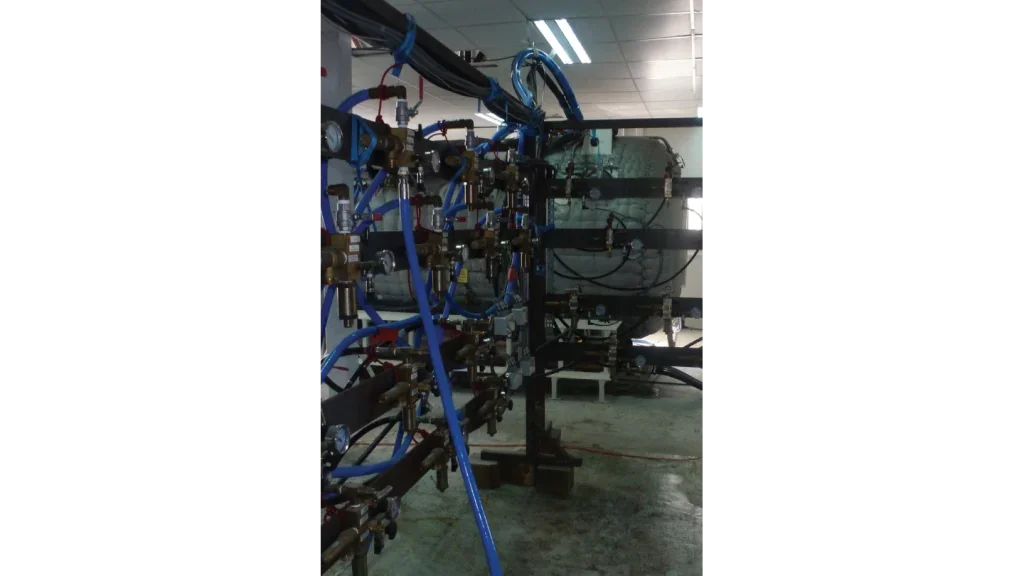
Nitrogen is a relatively dense, inert gas which is narcotic and ultimately fatal at high partial pressures and which, following exposure to it at pressure, requires controlled decompression to mitigate the risk of DCI.
Helium is a low density, inert, non-narcotic but expensive gas which is used as a diluent to reduce the gas mix density and the partial pressures of oxygen and nitrogen to counter the harmful effects of exposure to high oxygen and/or nitrogen partial pressures.
Carbon dioxide is frequently ignored but is a relatively dense, narcotic gas that is not inhaled but which is produced in the body as the end product of human metabolism. It is prone to being retained in the lungs thus preventing the inhalation of oxygen.
All gases increase in density with pressure hence, as a consequence, increase the work of breathing.
Contrary to common perception it is not the difficulties in decompression but the increased gas density and associated work of breathing along with the narcotic potential which trigger the need to introduce helium into the breathing mixture. Generally accepted upper limits on gas density and narcotic potential are reached in air at pressures of around 3.5 bar(g).
(*) Partial pressure of a gas (in a gas mixture): the pressure it would have if it alone occupied the space filled by the gas mixture
HPCA – INTEGRATED PACKAGE OF GUIDANCE AND STANDARDS
On the topic of HPCA, there is an extensive integrated package of guidance and standards.
The headline publication is the ITA/BTS CAWG Report 10. However, that primarily covers the HPCA process, including operational issues and relevant gas physiology. It does not address the safety of the necessary hardware on the TBM, its manlocks or the TUP shuttle. Report 10 does, though, cover the safety requirements for any surface habitat required as there are no tunnelling industry or diving industry standards for such installations.
First published in 2012, Report 10 has been revised three times, the most recent revision being published as discussed, in 2024. The latest revision is a much more comprehensive document than the original Report.
Report 10 itself is not a standalone document but provides the add-on guidance covering high pressure mixed gas and saturation exposure techniques, to the BTS ‘Guidance on good practice for Work in Compressed Air.’ The latter addresses the health and safety aspects of compressed air work in general as well as low and intermediate pressure compressed air work. The two documents should be read as a pair.
EN 16191 ‘Tunnelling machinery – Safety requirements’ sets out the essential safety requirements for the TBM, including those parts relating to compressed air work. The standard is currently being revised with the provisional revised text published in early 2023 and the final harmonised text expected in late 2025.
EN 12110 ‘Tunnel boring machines – Air locks’ sets out the essential safety requirements for airlocks. The standard is currently being revised into two parts: Part 1 setting out essential safety requirements for airlocks for air mode exposures and oxygen decompression; Part 2 to set out essential safety requirements for mixed gas use and for saturation exposure techniques along with requirements for TUP shuttles.
Part 2 is similar in format to Part 1 but because there are three mixed gas supplies to be controlled, requires a much greater complexity of valves, gauges, etc, as well as gas analysis equipment. In addition, to achieve the performance levels required in CEN standards – which incorporate life safety critical control systems – considerable redundancy and diversity is required. The TUP shuttle is essentially a mobile mixed gas personnel lock but with safety requirements arising from its mobility included.
The provisional revised texts were published in early 2023 and the final harmonised texts are also expected in late 2025.
REFERENCES
- Lamont, D., Colvin, A., Heili, A., Ridley, T., Slocombe, R. & Wendling, J. (2024) ‘Advanced high pressure hyperbaric techniques in tunnelling.’ Undersea Hyperb Med. 2024 Second Quarter; 51(2):159-171
- BTS CAWG (2021) ‘Guidance on good practice for work in compressed air.’ Revised guidance, published in 2021, available at: https://britishtunnelling.com/pages/work-in-compressed-air
